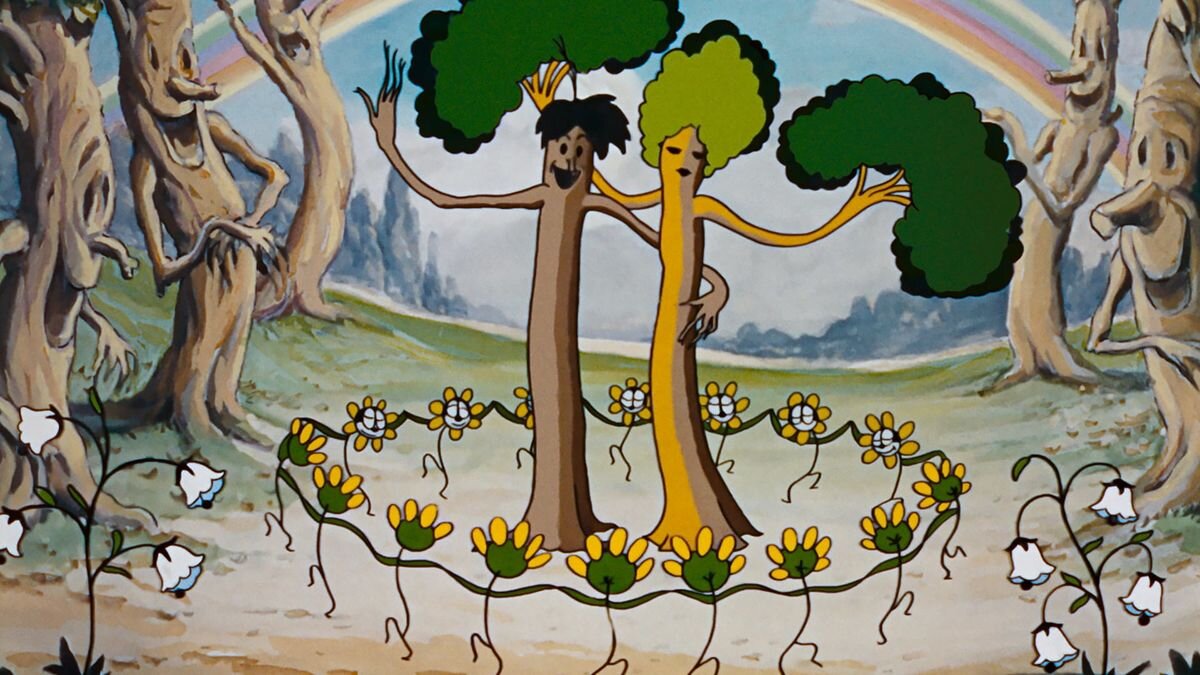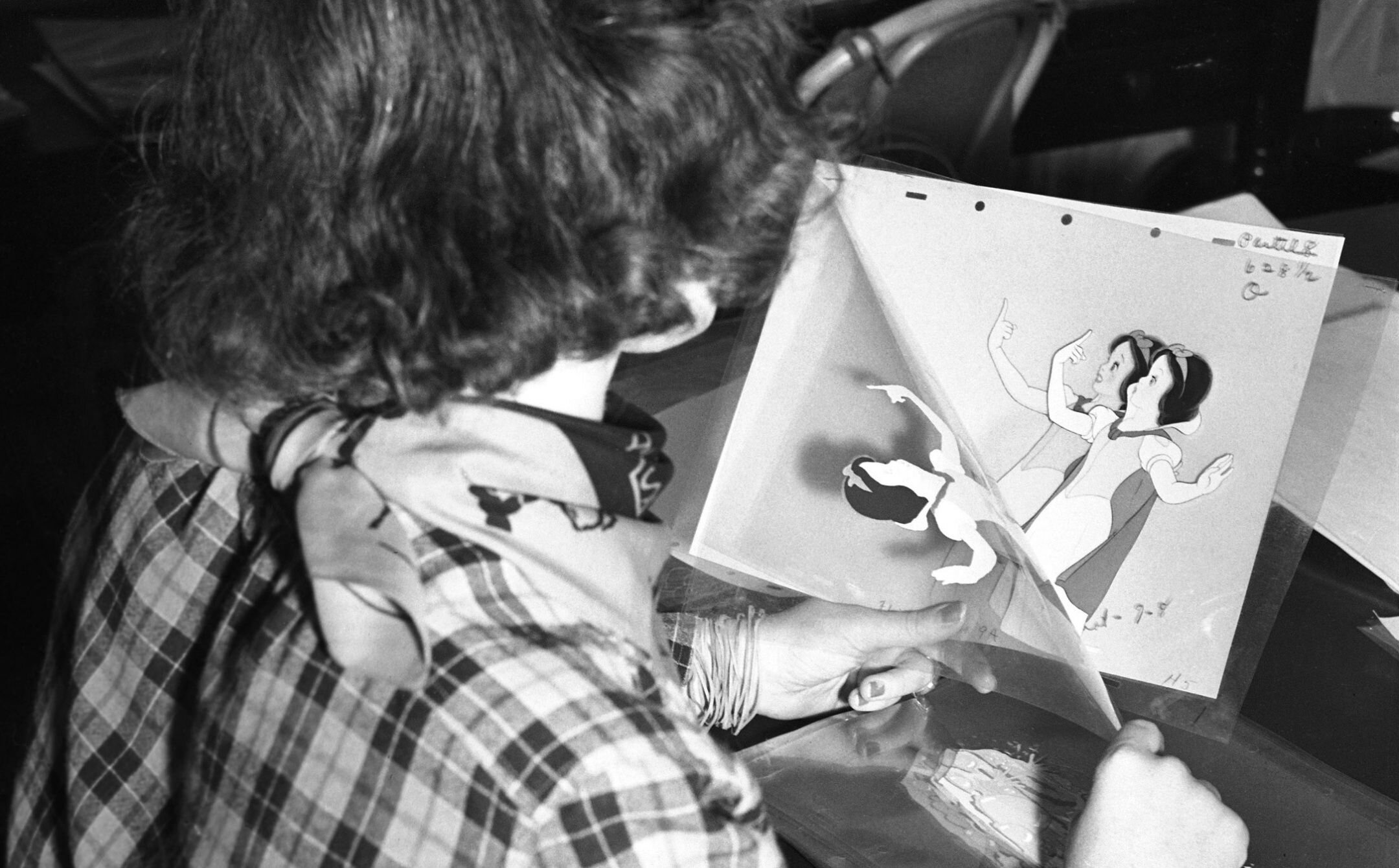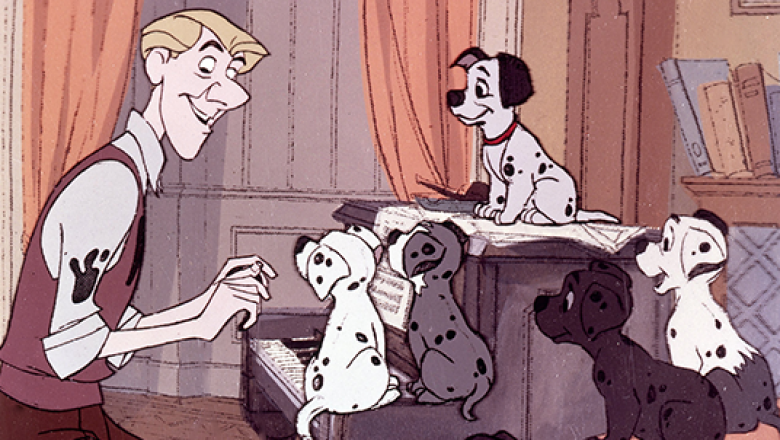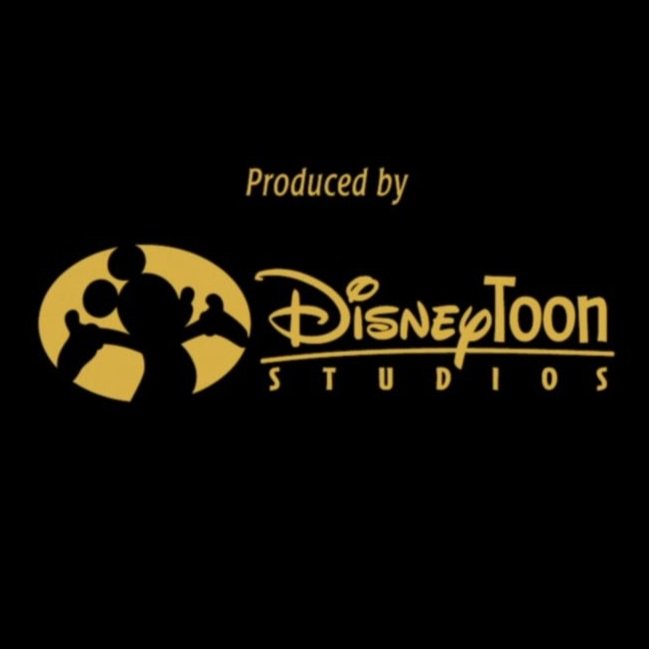The History of the Evolving Animation Styles of Disney
I was recently watching a YouTuber rank every single Disney and Pixar animated film and I couldn’t help but notice how much the animation styles change each year that new movies are released. This is due to lead animators changing out, new executives, new technology being created, or simply just to try something new. Each time the studio saw a downfall in their ratings, it seems that’s when they changed up their style the most. Let’s discuss some of the times Disney changed up their animation styles.
Flowers and Trees (1932) - Technicolor
In 1929 as Disney was just starting to take off with his new Mickey Mouse character, he also began a new animated series called Silly Symphonies. These were black and white short films that introduced new characters and sequences to be released in between the Mickey shorts. In 1932, Walt Disney Animation released Flowers and Trees. This was the first ever 3-strip technicolor short they had ever put out. After that, Disney decided to use the technicolor technology for all of his future films beginning in 1935. Flowers and Trees won the first ever Best Cartoon Short Subject at the Academy Awards in 1932.
Flowers and Trees (1932). Image from: https://letterboxd.com/film/flowers-and-trees/
“I had a black-and-white picture in the works called Flowers and Trees. But I just felt that color could do so much more for the cartoon medium, that it was worth doing over. I got Technicolor to give me an exclusive [in the cartoon field] for two years for the use of their three-color process.”
Snow White and the Seven Dwarves (1937) - Rotoscoping & Multiplane Camera
When Walt set out to make his first ever feature-length animated film, he knew he would need to update his technology for the artists to make it happen. Though the animators were fans of hand drawing scenes and characters from their own minds and using their own mirrors for facial reference, Disney thought he would bring in the technique of rotoscoping, invented by Max Fleischer. It is a technique in which you draw or trace over a live-action frame in order to make it look more realistic. Walt brought in reference models such as Marge Champion to be Snow White, filmed it, and the animators used it to bring fluidity to the film. Snow White was the first film to use a multiplane camera as well, to give depth to the animation.
Snow White and the Seven Dwarves rotoscoping. Image from: https://www.pinterest.ch/pin/353180795777032462/?amp_client_id=CLIENT_ID(_)&mweb_unauth_id={{default.session}}&_url=https%3A%2F%2Fwww.pinterest.ch%2Famp%2Fpin%2F353180795777032462%2F
Pinocchio (1940) - 3D Models & Water Effects
Though Snow White was highly successful and the way they animated it worked well, Disney wanted to keep pushing the boundaries to see what else they could do. This time with Pinocchio, instead of only having 2D references to follow, they also constructed 3D models of the characters and some of the set pieces. One of the most impressive parts about this decision was that they also built scale models of every cuckoo clock that’s in Geppetto’s workshop.
Pinocchio 3D model. Image from: https://www.waltdisney.org/blog/models-miniatures-and-movie-magic
Something that makes Pinocchio such a standout for artists even today, is the water effects. Pinocchio is known to have such big scenes in the water like when he’s faced with Monstro the whale, and even in Cleo’s fish bowl. According to Animation Central, animator Sandy Strother kept a diary of his time animating water for the film for an entire year. The techniques they used to put such intricate details in every frame of the water, was used for decades after, including in The Little Mermaid.
Pinocchio water scene. Image from: https://medium.com/cinemania/a-puppet-in-walt-disneys-hands-ea2d5b43ef96
Sleeping Beauty (1959) - Backgrounds & Widescreen
Sleeping Beauty is one of Disney’s most artistically-pleasing films to date. Artist Eyvind Earle was responsible for creating the incredible backgrounds we see throughout the film, it was the first time Disney really experimented with their style.
Sleeping Beauty art by Eyvind Earle. Image from: https://www.pinterest.ca/pin/328903579016122091/
In an attempt to make Sleeping Beauty stand out from other films and the television series that were rising in the 1950s, Disney played with the aspect ratio of the film. They released it in Technirama 70mm, which was the first time it had been used ever.
101 Dalmatians (1961) - Xerography
By the 1960s, the studio was desperate to find ways to create grand films that wouldn’t take a grand amount of work. Ub Iwerks introduced xerography, a process in which drawings could be directly printed onto animation cels. This saved Disney time and money by not having to hand ink every animation cel. It was also the perfect time to use it since animating 101 puppies was a daunting task. Disney used this method all the way until The Little Mermaid.
101 Dalmatians. Image from: https://d23.com/approximately-101-reasons-why-i-love-one-hundred-and-one-dalmatians/
The Great Mouse Detective (1986) - Computer Animation
Although CGI wasn’t popularized yet, Disney began dabbling with it in small ways beginning with The Great Mouse Detective. The whole Big Ben chase scene was dedicated to testing out computer animation. It’s very noticeable watching back the clip now, as you can see the contrast between the hand-drawn characters and the movement of the gears. CGI wasn’t popularized until the 1990s, when Toy Story was released.
The Great Mouse Detective. Image from: https://www.youtube.com/watch?v=ayTXmzgtaZs
Who Framed Roger Rabbit? (1988) - Live-Action Animation
One of Disney’s earliest projects, The Alice Comedies, was a hybrid between live action and animated film sequences. The studio had done this several times over their first few decades, even in Mary Poppins in 1964. But it wasn’t until Who Framed Roger Rabbit that they really took it to the next level. The entire film had an immersive world between live action characters and hand-drawn animation. It was extremely impressive for the time - and still is a legendary film because of it.
Who Framed Roger Rabbit? Image from: https://www.rogerebert.com/far-flung-correspondents/a-laugh-can-be-a-very-powerful-thing-who-framed-roger-rabbit-30-years-later
Beauty and the Beast (1991) - 2D & 3D
Beauty and the Beast was the last film for several decades to use hand-drawn animation. The 1990s was when Disney really started to play with the technology that their sister company Pixar was inventing. Pixar invented CAPS (computer animation production system), that allowed every part of the animation process to be digital. Instead of kicking off Beauty and the Beast as their first fully CGI movie (which Toy Story ended up being), they instead used computer animation during the ballroom sequence to test it out. They wanted to give that scene depth, and see if they could invoke emotion with the use of the moving frames. It’s safe to say they definitely did.
Beauty and the Beast ballroom scene. Image from: https://disney.fandom.com/wiki/The_Ballroom
Hercules (1997) - Morphing Objects
The Renaissance was the era that Disney did the most exploring with new CGI techniques, including a new technique in which they could morph objects using computer animation. You can see this done during the Mount Olympus scenes up in the moving clouds. Disney wanted to give the illusion that you were looking at a beautifully done painting - that could still be constantly moving.
Mount Olympus in Hercules. Image from: https://disney.fandom.com/wiki/Mount_Olympus
Chicken Little (2005) - CGI
The Walt Disney Animation Studios first ever fully CGI film was Chicken Little. The process of making Chicken Little was not an easy one, not only due to animators now having to learn a new way to animate, but also with the storyline being constantly changed. Director Mark Dindal said,
“The process was really fun. In a lot of ways it was like making a live-action movie in the computer, because we built sets and you could do location scouting. ”
Chicken Little. Image from: https://www.slantmagazine.com/film/chicken-little/
Princess and the Frog (2009) - Back to Hand-Drawn
Disney’s never-failing formula to go back to whenever the studio is hitting a dry spell is to create a princess movie. The beginning of each Disney era begins with a successful princess movie - Snow White, Cinderella, The Little Mermaid, and now Princess and the Frog. The studio wanted to bring back the charm it used to have, and to introduce the classic style that they were always known for. To do this, they chose a well-known fairytale and put their twist on it, and reverted back to hand-drawn animation for this film. The studio had to locate and dust off the old drawing and painting work stations for the film, and it paid off in the end.
Princess and the Frog. Image from: https://www.intofilm.org/resources/144
Tangled (2010) - CGI onward
Although Princess and the Frog did well, it was a sign of the times that they needed to continue perfecting their computer animation skills to keep up with other studios, including Pixar. Tangled was the beginning of establishing their art style in CGI, as films like Frozen and Moana also have the same animation style. They also made great progress, with the smooth and realistic movements of Rapunzel’s hair.
Tangled. Image from: https://www.nytimes.com/2020/04/16/movies/stream-movie-tangled.html
Over the decades, Disney has changed their style up and continued to adapt to what’s popular in the film industry. Though I have a personal bias toward the traditional hand-drawn animation, it’s clear that they’re able to be more imaginative and creative using the computer technology to bring scenes and characters to life. What’s your favourite era of Disney animation?
Reference list:
https://www.tommiemedia.com/diversions/walt-disneys-evolving-animation-styles/
https://blog.threadless.com/disneys-art-style-through-the-decades/
https://www.b2w.tv/blog/the-evolution-of-animation-a-brief-journey-through-time
https://www.quora.com/Which-film-was-Disney-s-first-animated-film-to-use-computer-graphics
https://en.wikipedia.org/wiki/The_Great_Mouse_Detective#Production
https://www.fudgeanimation.com/2018/11/the-evolution-of-animation-a-timeline/
https://ohmy.disney.com/insider/2016/01/05/10-disney-movie-moments-that-changed-animation/
https://disney.fandom.com/wiki/Flowers_and_Trees
https://www.cgmagonline.com/2017/01/15/history-art-rotoscoping/
https://allanimation.fandom.com/wiki/Disney%27s_Pinocchio#Production
https://www.in70mm.com/newsletter/2000/61/technirama/index.htm
https://www.tor.com/2015/07/23/the-advent-of-xerography-disneys-one-hundred-and-one-dalmatians/
https://www.slashfilm.com/live-action-animation-hybrids/
https://gizmodo.com/the-animated-beauty-and-the-beast-remains-a-near-perfec-1793298454
http://www.filmscouts.com/scripts/matinee.cfm?Film=hercule&File=productn
https://collider.com/disney-chicken-little-history-explained/






















